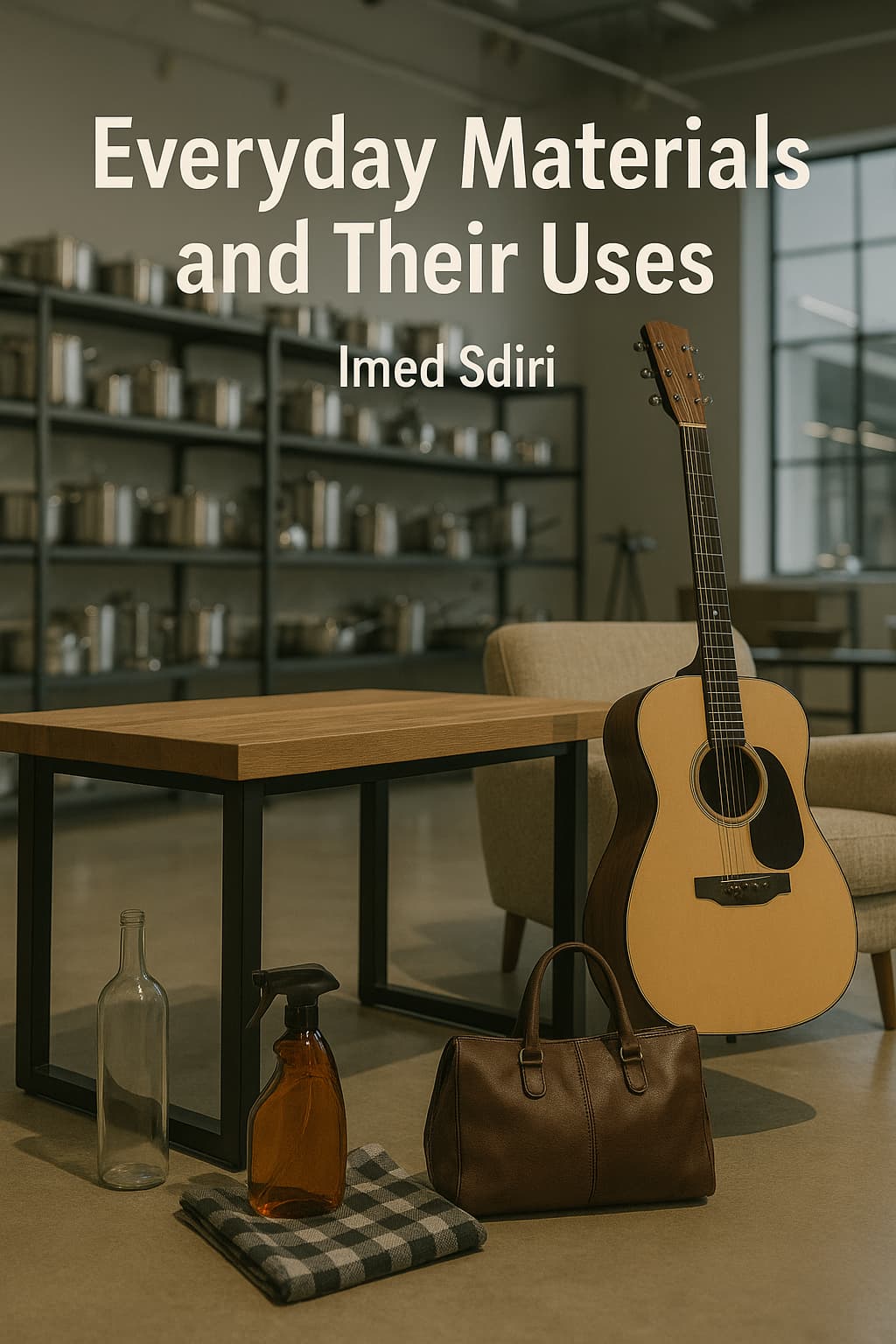Have you ever stopped to think about what the things around you are made of? We are surrounded by objects created from many different materials. Each material has special properties that make it useful for certain jobs. Let's explore some common materials.

CEFR A2 Level
Read and understand simple texts that deal with familiar topics.
Everyday Materials and Their Uses
Wood: Coming from trees, wood is a strong, natural material. It's used for furniture like tables and chairs and for building houses, especially floors and roofs. It’s also used for making smaller items like toys or musical instruments, like violins or guitars. It feels warm to touch and often looks beautiful.
Metal: Metals like iron, steel, aluminum, copper, gold, and silver are usually hard, strong, and often shiny. We use metal for cars, bicycles, bridges, tools, machines, kitchen sinks, cutlery (like forks, spoons, and knives), coins, and jewelry. Metal conducts heat and electricity well. Some metals, like iron, can rust if they get wet.
Plastic: Plastic is a man-made material that is very flexible. It can be made into almost any shape or colour. It's lightweight, often waterproof, and doesn't usually break easily. We find plastic in bottles, bags, toys, computers, phones, furniture, and many parts of cars. While very useful, plastic waste can cause many problems to the environment.
Glass: Made from sand, glass is typically transparent and hard, but it breaks easily. Its main use is for windows in buildings and vehicles. We also use it for drinking glasses, bottles, jars, and mirrors.
Fabric and Textiles: These are the materials used for clothes, curtains, towels, sheets, and furniture coverings like sofas. Natural fabrics include cotton (from plants, used for t-shirts, jeans), wool (from sheep, used for warm jumpers and scarves), and silk (from silkworms, used for expensive clothes and ties). Leather (from animal skin) is used for shoes, bags, and jackets. Man-made fabrics like polyester and nylon are also very common.
Understanding materials helps us appreciate how things are made and why certain materials are chosen for specific purposes. From a wooden table to a plastic bottle or a wool sweater, materials shape our world.